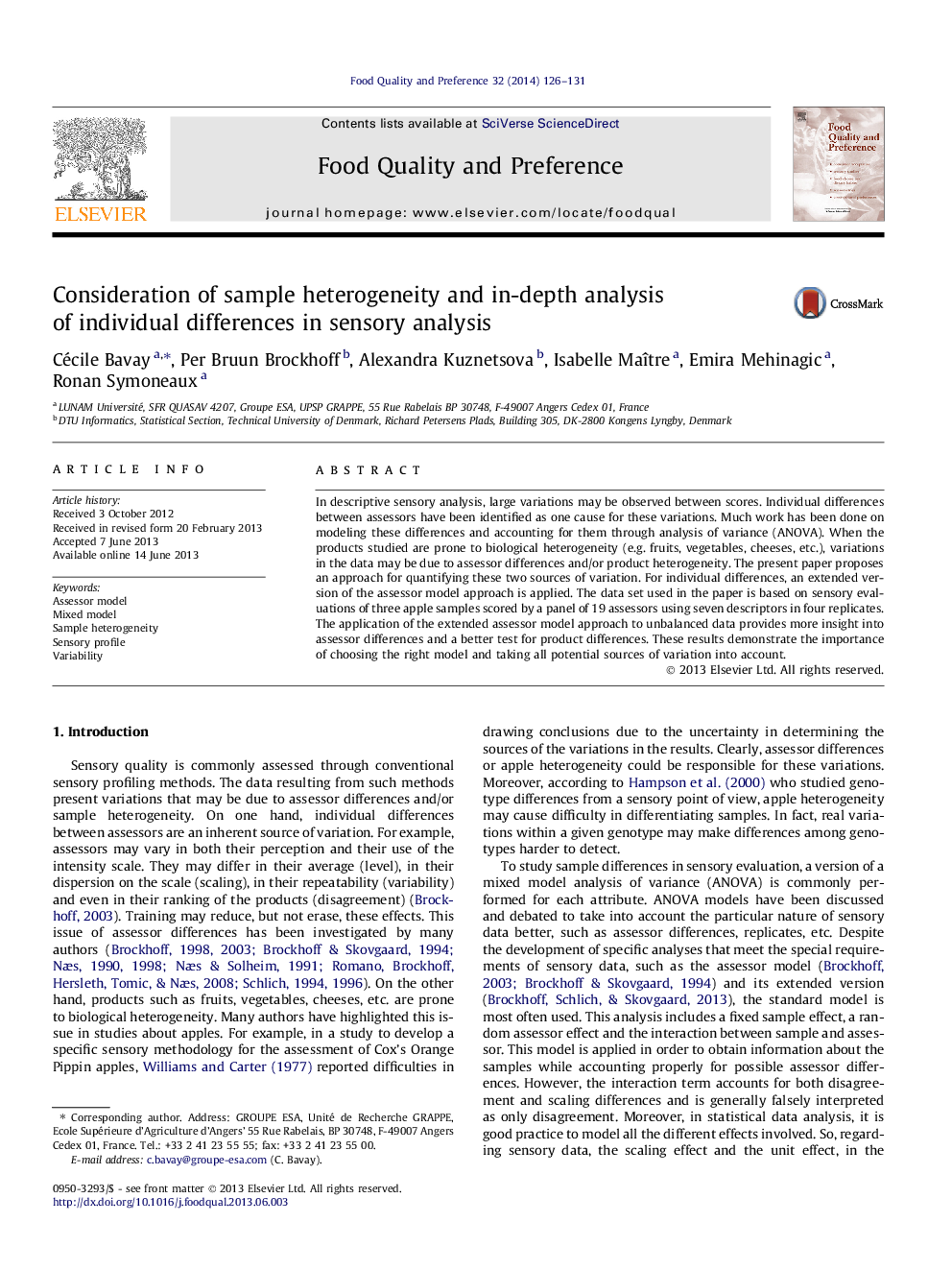| Article ID | Journal | Published Year | Pages | File Type |
|---|---|---|---|---|
| 4317177 | Food Quality and Preference | 2014 | 6 Pages |
•A novel model is presented to account for sample heterogeneity.•Accounting for heterogeneity modifies the testing of the sample effect.•The assessor model is combined with accounting for a complex blocking structure.
In descriptive sensory analysis, large variations may be observed between scores. Individual differences between assessors have been identified as one cause for these variations. Much work has been done on modeling these differences and accounting for them through analysis of variance (ANOVA). When the products studied are prone to biological heterogeneity (e.g. fruits, vegetables, cheeses, etc.), variations in the data may be due to assessor differences and/or product heterogeneity. The present paper proposes an approach for quantifying these two sources of variation. For individual differences, an extended version of the assessor model approach is applied. The data set used in the paper is based on sensory evaluations of three apple samples scored by a panel of 19 assessors using seven descriptors in four replicates. The application of the extended assessor model approach to unbalanced data provides more insight into assessor differences and a better test for product differences. These results demonstrate the importance of choosing the right model and taking all potential sources of variation into account.
